classic plus?
Forums
Re: classic plus?
Summer. And I do see a white tail head. But how would rabicano affect legs/face? That is usually seen on barrel/tail?
[img]http://i555.photobucket.com/albums/jj45…]
Winter woolies.
Re: classic plus?
We all know there are several genetic causes for "roaning".
I was trying to find (more) roan descriptions/examples on our gallery and did not see a lot of portraits that portray the variations?
Would it be a good idea for the ones searching for information, to first describe all the causes for roan, and then separate them accordingly?
For example
Classic roan: White hairs mixed into base coat over the entire body, but mostly leaving head and legs unaffected, thus showing the horses base color. The color changes with the season, with more white in summer.
Sabino roan: White hair possibly spread over the entire body, including head and legs. No big difference in summer and winter white
[size=85](of course that is flawed, since sabino roaning can also show in patches around paint markings)[/size]
Varnish roan: Mostly a progressive pattern [size=85](or is it? Are there varnish roans born in a shade they will keep for the rest of their lives?)[/size] Roaning over the entire body (?) but base color often remains visible in some area's most often including the joints.
Grey: in the transition from base color to 'white' the horse can show what appears to be roaning. Legs and head will be equally affected as the body, with the head often showing the first signs of white.
I know this is a very flawed description and all suggestions to improve it are very welcome. I really did not give it much thought, but wanted to illustrate what I thought might be a helpful example for those searching for information on what might cause roan. :oops:
Re: classic plus?
I have a pic of a red roan mare --- maybe I find a closer pic but as far it´s the best I have. Her mother is a bay roan, her father a bay.
Re: classic plus?
Her winter coat tells the tale IMO. See how most of the roaning on her face left in the winter coat? Classic roan. Classic can cause the white tail head too, so unless you see rabicano stripes I wouldn't necessarily think it was there.
These two are also classic with no varnish or gray:
Re: classic plus?
[quote="accphotography"]Her winter coat tells the tale IMO. See how most of the roaning on her face left in the winter coat? Classic roan. Classic can cause the white tail head too, so unless you see rabicano stripes I wouldn't necessarily think it was there.[/quote]
In the winter coat I see the same amount of white on the face as on the body. With the body being less, the face is too. The first picture (mounting) is a november shot. Plenty of white on the face.
I have never noticed a white tail head on a classic. Which does not mean a thing, of course, other than for me, it leaves a remote possibility open for sabino expressions to also be present. :? Maybe causing a bleed over of white in the area's where it is normally not expected with classic alone? Just theory, of course. The last pic you posted looks a lot like the same thing going on. Classic plus, or classic classic, or modern classic or whateverroanexpression we are looking at. Same white tail head, BTW. Cool! 8-)
[img]http://i173.photobucket.com/albums/w65/…]
Re: classic plus?
ACC: Both horses look like they have sabino roan or maybe a combination with it. :flower
As for rabicano - it seems to work as a booster on some other patterns. It increases sabino and classic roan in its expression. Which made me think maybe there is this booster-effect since sabino and classic roan are both on KIT? Does anybody know if they found a location for rabicano yet? :?:
Re: classic plus?
I've never seen a rabicano only with roaning on the head. I have seen a fair amount of classic with roaning on the head. I just firmly believe that gene expression is not as limited as our minds tend to think it should be.
Strangely, nearly every classic roan I have ever encountered has had white at the tail head and some in the mane. Even the "normal" looking ones.
Brabants don't have sabino from what I've seen, yet look how much roaning they get on their face.
Here's another FWIW. (Note all of these horses are red based... interesting.)
[img]http://i260.photobucket.com/albums/ii17…]
Oh and about her face in the winter coat, it may be about the same as her body, but it's less roaned than the summer coat, which tells me the roaning there is seasonal, ala classic.
Re: classic plus?
[quote="accphotography"]Oh and about her face in the winter coat, it may be about the same as her body, but it's less roaned than the summer coat, which tells me the roaning there is seasonal, ala classic.[/quote]
*nods* Yes. But ;) the other explanation could be sabino, which also tends to expres lighter in a winter coat. It does on my (roan) mare anyway.
That draught (?) baby is cool. How sure are we there is no other pattern in the breed? :?
Re: classic plus?
The second stallion carries classic roan + rabicano - first stallion, same breed, classic roan. This breed carries an own mutation of the classic roan, verified by Dr. Phil Sponenberg through DNA tests. Probably due to long-time isolation and inbreeding.
Their story is here:
http://www.angelfire.com/az/xochitl/Cer…" onclick="window.open(this.href);return false;
How can I get rid of the file names? :?:
Re: classic plus?
[quote="vneerland"]We all know there are several genetic causes for "roaning".
I was trying to find (more) roan descriptions/examples on our gallery and did not see a lot of portraits that portray the variations?
Would it be a good idea for the ones searching for information, to first describe all the causes for roan, and then separate them accordingly?
For example
Classic roan: White hairs mixed into base coat over the entire body, but mostly leaving head and legs unaffected, thus showing the horses base color. The color changes with the season, with more white in summer.
Sabino roan: White hair possibly spread over the entire body, including head and legs. No big difference in summer and winter white
[size=85](of course that is flawed, since sabino roaning can also show in patches around paint markings)[/size]
Varnish roan: Mostly a progressive pattern [size=85](or is it? Are there varnish roans born in a shade they will keep for the rest of their lives?)[/size] Roaning over the entire body (?) but base color often remains visible in some area's most often including the joints.
Grey: in the transition from base color to 'white' the horse can show what appears to be roaning. Legs and head will be equally affected as the body, with the head often showing the first signs of white.
I know this is a very flawed description and all suggestions to improve it are very welcome. I really did not give it much thought, but wanted to illustrate what I thought might be a helpful example for those searching for information on what might cause roan. :oops:[/quote]
I think this is a very good idea, what does everyone think?...maybe you and Daylene could get your heads together and write something appropriate but I think it could really help people who are coming to look at the site for comparisons.
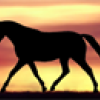

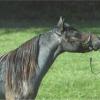
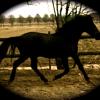
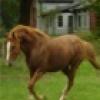
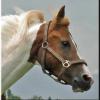

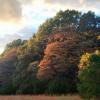

Re: classic plus?
Just classic IMO. I've seen others like her (albeit they're not the "norm").